Keeping your koi pond crystal clear takes plenty of time, effort, and dedication. However, even a seemingly healthy pond can turn green almost overnight.
Green pond water isn’t necessarily harmful to aquatic life such as koi fish. In fact, it’s perfectly natural for small bodies of water such as ponds to turn green, especially in warmer weather.
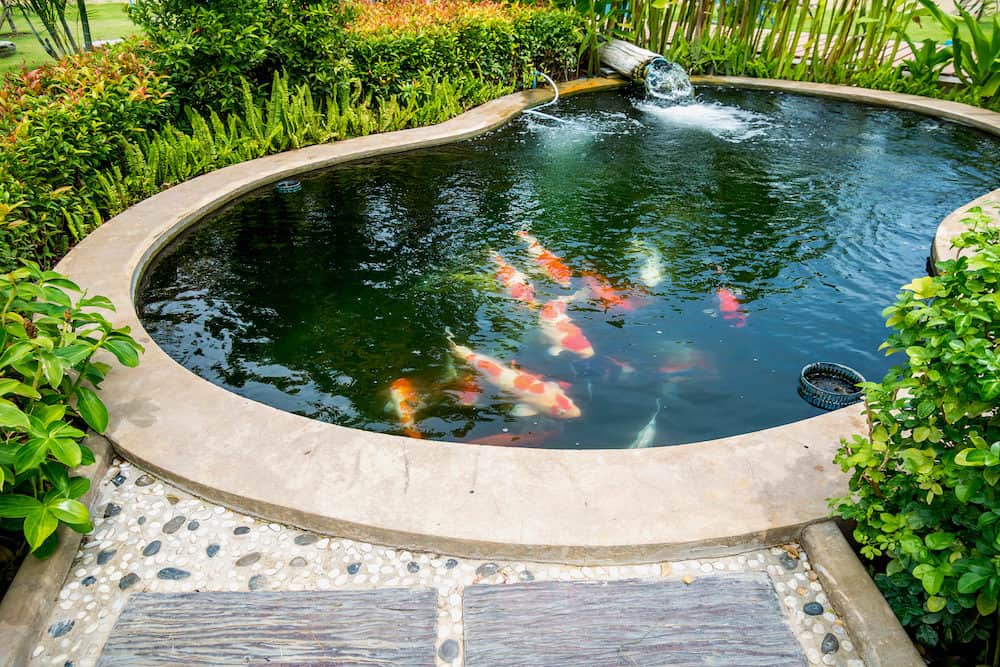
Still, if you’re like me, you prefer watching your prized fish swim through clean, clear water. With proper water treatment and long-term maintenance, I’ve found that it’s relatively easy to avoid green pond water.
Here, I will discuss why you might have a green koi pond, how it might affect your fish, and how to get your pond looking healthy again.
In a koi pond, green water usually indicates excessive algae growth.
Algae make up an integral part of the ecosystem in any koi pond and should always be present in small amounts. It helps complete the nitrogen cycle, ensuring that harmful compounds don’t build up in the water.

When organic waste produces toxic nitrites and ammonia, beneficial bacteria break down these compounds into nitrates, which are safer for fish and plant life. However, nitrates can still build to dangerous levels over time if left unchecked.
Alga cells remove and digest nitrates from pond water, helping to maintain levels safe for your koi fish.
While a small amount of pond algae is desirable in any setup, it can be surprisingly easy for colonies to grow out of control.
An excess of nutrients such as nitrates and phosphates in the water can encourage unchecked algal growth. Sunlight and warm weather also foster algae growth, meaning pond owners are most likely to see blooms occur in the spring and summertime.
Individual alga cells feed off extra nutrients in the water, reproducing and duplicating to produce a larger algae colony known as a “bloom.”
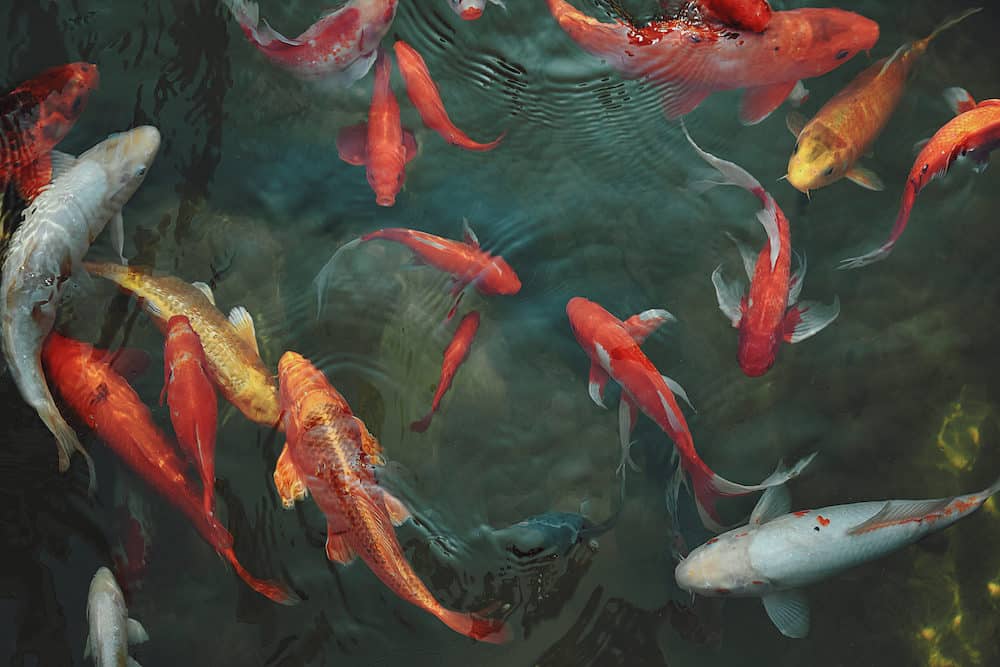
Often, planktonic algae blooms will turn the water a cloudy green color. In emergent or mild cases, you may even be able to see clearly through the water, though everything will appear tinted in color.
An algae bloom may also cover the water's surface, making it appear bright, opaque green. In advanced cases, the algae may almost look like solid ground and will obscure any wildlife living below.
Many koi pond owners are also familiar with filamentous algae, also known as string algae. Alga cells form long, string-like filaments and often grow on underwater substrates such as rocks or pond décor.
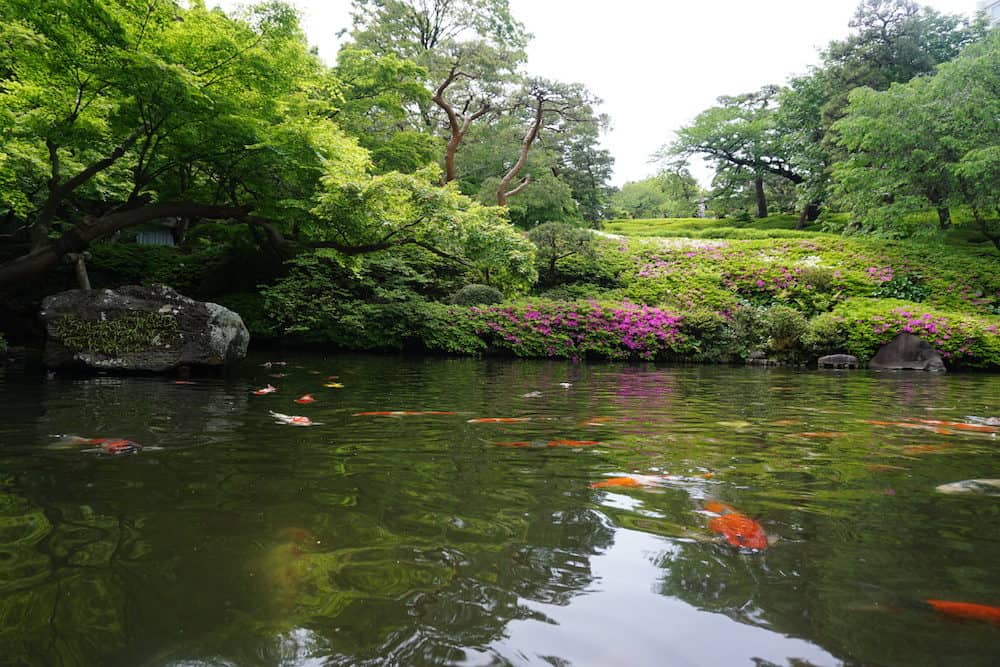
Filamentous algae blooms can also appear on the surface of your pond, making the water appear green.
In most cases, green koi pond water is perfectly safe for fish. Most species of algae that koi owners will encounter are actually beneficial for their pond’s ecosystem. Very few types of algae produce toxins or byproducts that will harm fish.
Green water only becomes a health concern when algae blooms grow out of control and take resources away from nearby aquatic life.
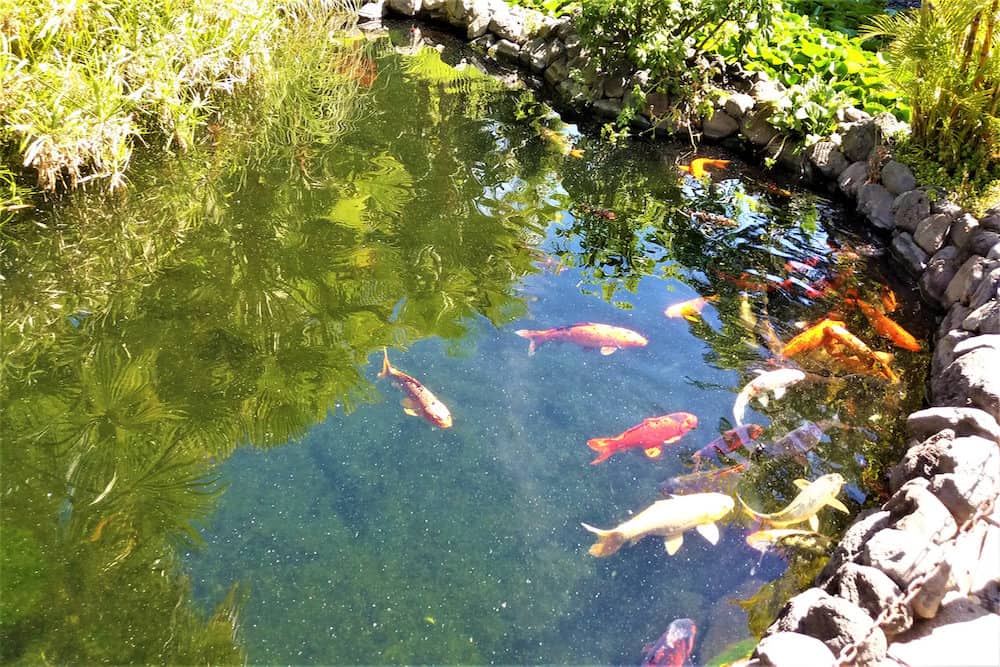
A large, unchecked algae bloom can potentially block light to the bottom of your pond, stunting or killing underwater plants. Fish can also suffer without enough access to sunlight, as they rely on it to produce nutrients such as vitamin D.
With enough algae floating around your pond, cells or filaments may clog fish gills and lead to respiratory issues.
In controlled cases, green water caused by live algae blooms rarely harms koi fish. The real danger lies in dying or dead algae.
When blooms die off, organic matter settles in the water as it decomposes. This process depletes oxygen from the surrounding water, eventually leading to anoxic conditions that kill underwater life such as fish, snails, crabs, and more.
Just because your pond water is clear doesn’t mean that it’s healthy. Water devoid of any bacteria or algae can’t support aquatic life.
Without algae, waste such as nitrates will build up to unmanageable levels, leading to toxicity and possibly even death in your koi fish.
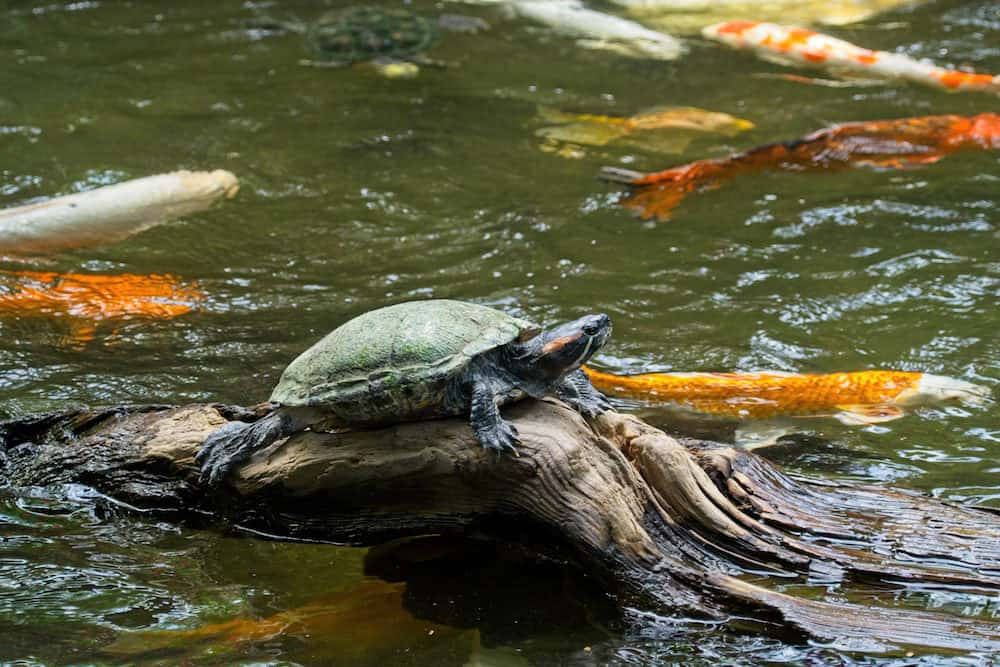
Green algae also offer a natural way to introduce oxygen into your pond alongside your air pump. Ponds without any algae may not contain enough dissolved oxygen to support a large fish population.
It’s good to have a little bit of algae growing on the inner surface of your pond. Whether it settles on the bottom or attaches to rock substrate, you want to see at least a little bit of algae build up in your pond.
A slight green or emerald tint is often healthier than seeing crystal-clear water. It means that there’s a thriving ecosystem under the surface of the water that’s ready to support your koi population and keep your fish healthy.
When my koi pond is green, I like to address the issue before algae growth has a chance to get out of hand. There are several ways that you can restore your pond water to its original clarity.
If your koi pond doesn't already have a filter in place, it's essential to install one to help remove large debris. A pump forces water through the system while a mechanical filter such as a grate or mesh panel catches particulate matter.
A pond filter can help catch large clumps of algae from both the surface and the interior of your pond. Algae blooms and loose filaments get caught in the filter and removed from circulation, keeping your water looking clear.
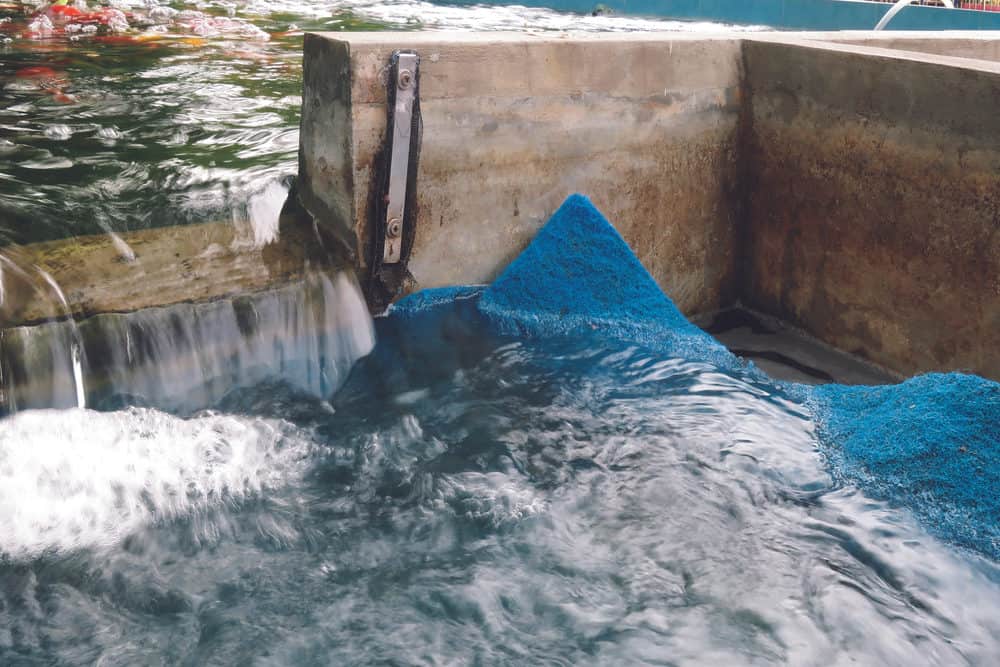
It’s important to remember to clean your pond filter regularly for it to work effectively. Otherwise, fish waste, dirt and debris will build up and block the free passage of water, rendering your expensive filtration system useless.
While a mechanical filter can catch debris visible to the naked eye, it may not be able to remove all color from your water. Individual alga cells pass through most systems without trouble so that your water remains an emerald color even after filtration.
If you’re looking for an easy, hands-off koi pond green water fix, UV light is a surefire way to stop excessive algae growth. UV light disrupts and destroys the cell wall in alga cells, killing them quickly and effectively.
The best way to treat a green koi pond with UV light is by installing a unit in the pond filter. As water pumps through, the UV light will hit and kill any passing alga cells. Dead cells clump together, either getting caught in your filter or sinking to the bottom of your pond.
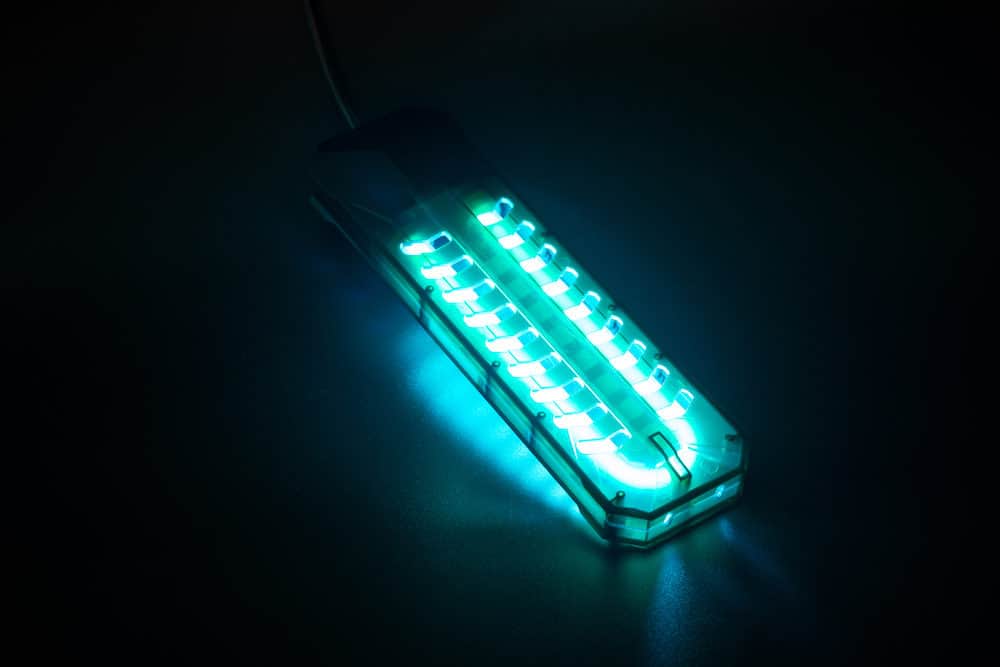
It generally takes about a week of filtration for UV light to kill all free-floating cells in a pond. After treatment, water should lose its green tint and become clear again.
Note that UV light isn’t often an effective treatment for filamentous algae or algae growing on the walls of your pond. It will only affect floating algae blooms that pass through your pond filter.
If you want to remove algae attached to the sides or base of your pond, you may need to remove it mechanically instead of relying on filters.
A pond vacuum is a specialized tool that allows you to remove and suck up any stubborn debris attached to substrates such as rocks, decor, or even pond gravel.
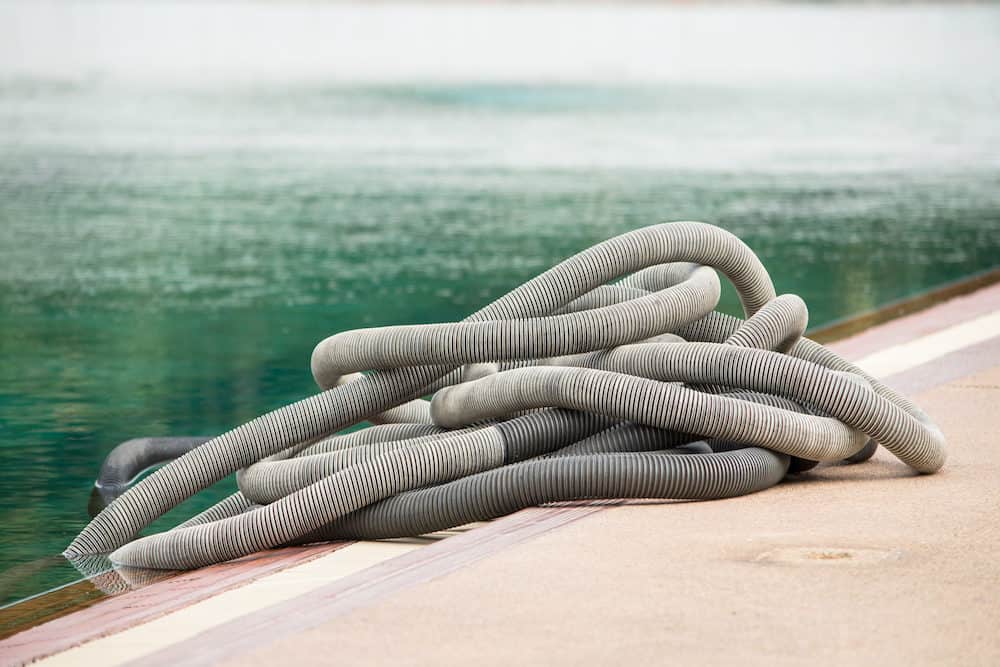
Using a pond vacuum is one of the best ways to deal with excessive growth of filamentous algae. You can easily detach strands at the base before removing them from the water.
When using a pond vacuum, you may not be able to immediately suck up all of the debris you dislodge. Often, water will look dirty or cloudy after a cleaning session.
Your filtration system should be able to handle any debris remaining in the water after you finish vacuuming away algae and sludge. Be sure to check and clean your filter regularly over the next few days to ensure that you remove all waste from your pond water.
Barley straw offers a safe, natural way to get rid of existing algae blooms that pose a threat to your pond’s ecosystem. Unlike harsh algaecides, barley straw won’t cause unwanted side effects or harm aquatic life.
When you expose barley straw to sunlight and oxygen, it produces compounds that work to inhibit the growth of new algae.
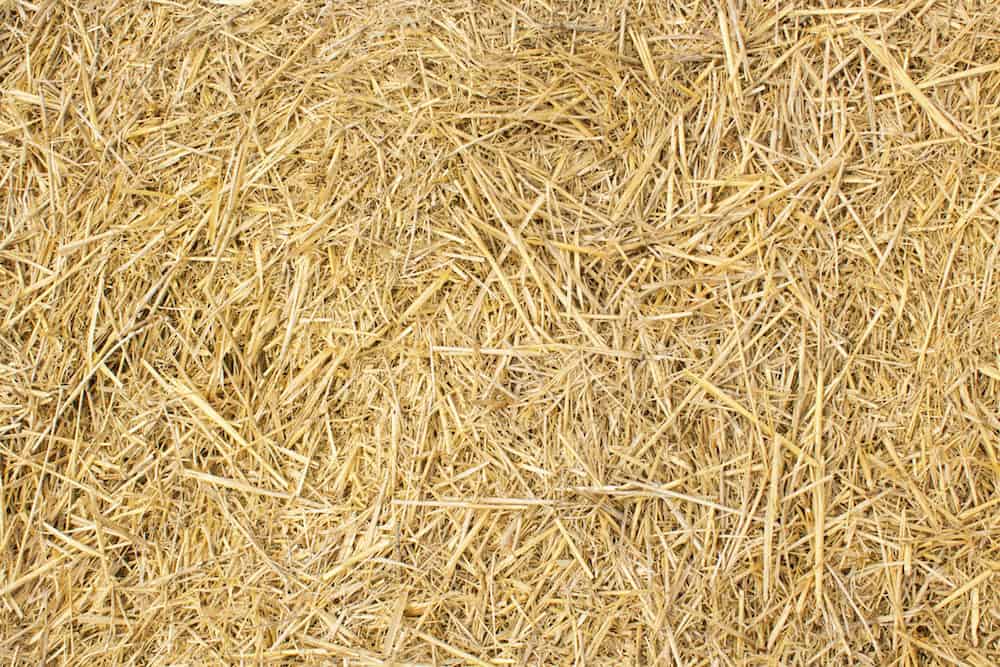
Fluff and spread dry barley straw over the surface of your fish pond, ensuring that you cover areas with visible algae blooms. Over the course of about four to six months, barley straw will stop new growth from occurring as old alga cells die off.
Though it can take some time, treatment with barley straw will eventually result in clean, crystal clear pond water.
The best time to use barley straw is right before algae’s peak growing season. Treat your pond after the last frost as it begins to warm up outside. Most koi owners treat their pond in the early springtime to prevent algae blooms in the summer months.



